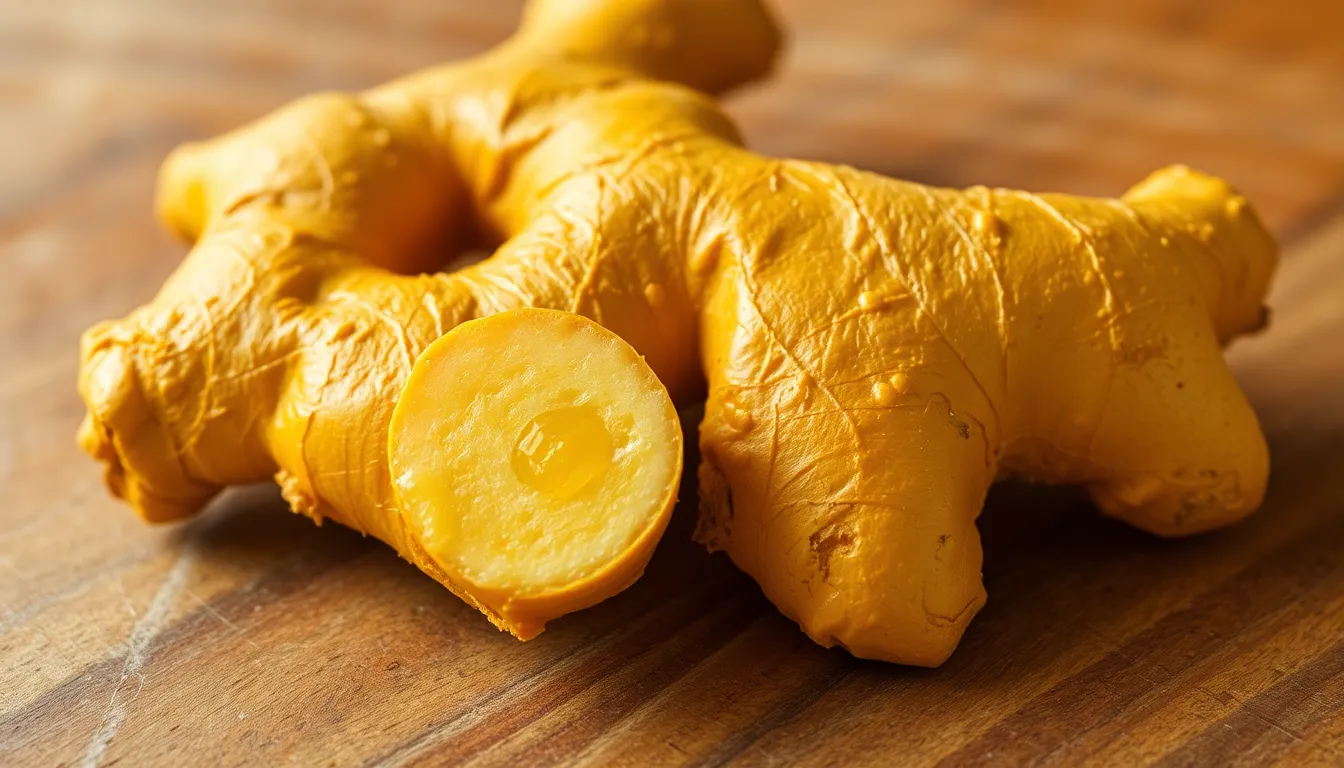Ginger is a culinary superstar known for its zesty flavor and health benefits, but even the best can go bad. Imagine reaching for that ginger root in your kitchen, only to discover it’s more of a science experiment than a spice. Knowing how to identify bad ginger can save your taste buds and your dinner plans from a disaster.
Table of Contents
ToggleSigns of Bad Ginger
Identifying bad ginger is crucial to maintaining quality in dishes. Several key indicators can point to spoilage.
Appearance
Faded color shows ginger’s decline. Fresh ginger should have a vibrant, golden-brown hue. Dark spots or mold growth indicates significant spoilage. If ginger appears wrinkled or shriveled, it has likely lost freshness. White powdery residue suggests the onset of decay. Checking for soft or mushy areas helps determine quality, as firm ginger is optimal.
Texture
Firmness denotes quality in ginger. Fresh ginger feels solid and slightly spongy to the touch. A soft or mushy texture signals it’s going bad. Additionally, if ginger exhibits a dry texture or easily breaks apart, it’s no longer fresh. Comparing the firmness of various pieces can help ascertain which one remains good for use.
Smell
A fresh, zesty aroma characterizes good ginger. When ginger turns bad, the scent becomes noticeably sour or off. If it gives off an unpleasant or musty odor, discard it immediately. Fresh ginger retains its strong, spicy fragrance, indicating its usability. A lack of fragrance also suggests that ginger may have lost its potency.
Storage and Shelf Life

Ginger maintains its quality when stored correctly. Storing it properly ensures a longer shelf life and preserves flavor.
Proper Storage Methods
Keep ginger in a cool, dry area away from direct sunlight. Wrapping fresh ginger in a paper towel and placing it in a resealable plastic bag helps retain moisture while preventing mold. Refrigeration can extend freshness for up to three weeks. For longer storage, consider freezing ginger. Cutting it into pieces or grating it before freezing allows easy use in recipes.
How Long Does Ginger Last?
Fresh ginger can last three weeks in a refrigerator if stored properly. When frozen, its shelf life extends to six months. Dried ginger typically remains usable for about one to three years. Signs of spoilage include discoloration, softness, or a sour smell. Discard ginger if any of these indicators appear, as they compromise flavor and quality.
Health Risks of Using Bad Ginger
Using spoiled ginger can lead to several health risks. Consumers may experience digestive discomfort when consuming bad ginger due to potential bacterial growth. Moldy ginger poses a significant risk since molds can produce mycotoxins, which may lead to nausea or allergic reactions. Signs of spoilage, such as a sour smell or slimy texture, indicate that ginger has deteriorated, increasing the risk of foodborne illness.
Potential Health Issues
Spoiled ginger can trigger gastrointestinal problems, including cramps and diarrhea. Allergic reactions can occur in sensitive individuals after consuming moldy ginger. When ginger shows signs of decay, its potency and flavor diminish, impacting overall health benefits such as anti-inflammatory and antioxidant properties. A thorough inspection of ginger before use helps minimize these health risks.
When to Avoid Consuming Ginger
Avoid consuming ginger that displays any signs of spoilage, such as dark spots or a mushy texture. Discard ginger that emits a sour or musty odor, as these indicate bacterial growth. Freshness is crucial, so it’s essential to check the appearance before adding it to recipes. If ginger looks shriveled or shows extensive mold, it’s safest to discard it altogether. Trusting sensory cues like sight and smell can help determine whether ginger is still good to consume.
Tips for Choosing Fresh Ginger
Selecting fresh ginger involves a few essential factors. Quality ginger displays a vibrant golden-brown color, while faded hues or dark spots indicate deterioration.
What to Look For
Fresh ginger should feel firm and slightly spongy, never soft or mushy. Strong, zesty aromas signal freshness, whereas sour or musty smells suggest spoilage. Check for visible mold or wrinkling on the surface, as these signs also indicate decline. Ultimately, individuals must trust their senses to identify quality ginger.
Common Myths About Ginger
Many people believe that all ginger is interchangeable, but this is not true. Fresh ginger has a unique flavor profile that dried or powdered versions can’t replicate. Another myth is that bruised ginger remains usable, though this should be avoided since bruised areas can harbor bacteria. Some think that ginger doesn’t perish quickly, yet improperly stored ginger can spoil within days. Being mindful of these misconceptions aids in choosing ginger wisely.
Recognizing the signs of bad ginger is essential for both culinary success and health safety. By paying attention to its appearance texture and aroma individuals can ensure they’re using fresh ginger in their dishes. Proper storage techniques also play a key role in maintaining ginger’s quality over time.
Discarding ginger that shows any signs of spoilage not only protects meals from unappetizing flavors but also helps avoid potential health risks. With these insights individuals can confidently select and store ginger to enhance their cooking and enjoy its numerous benefits.



